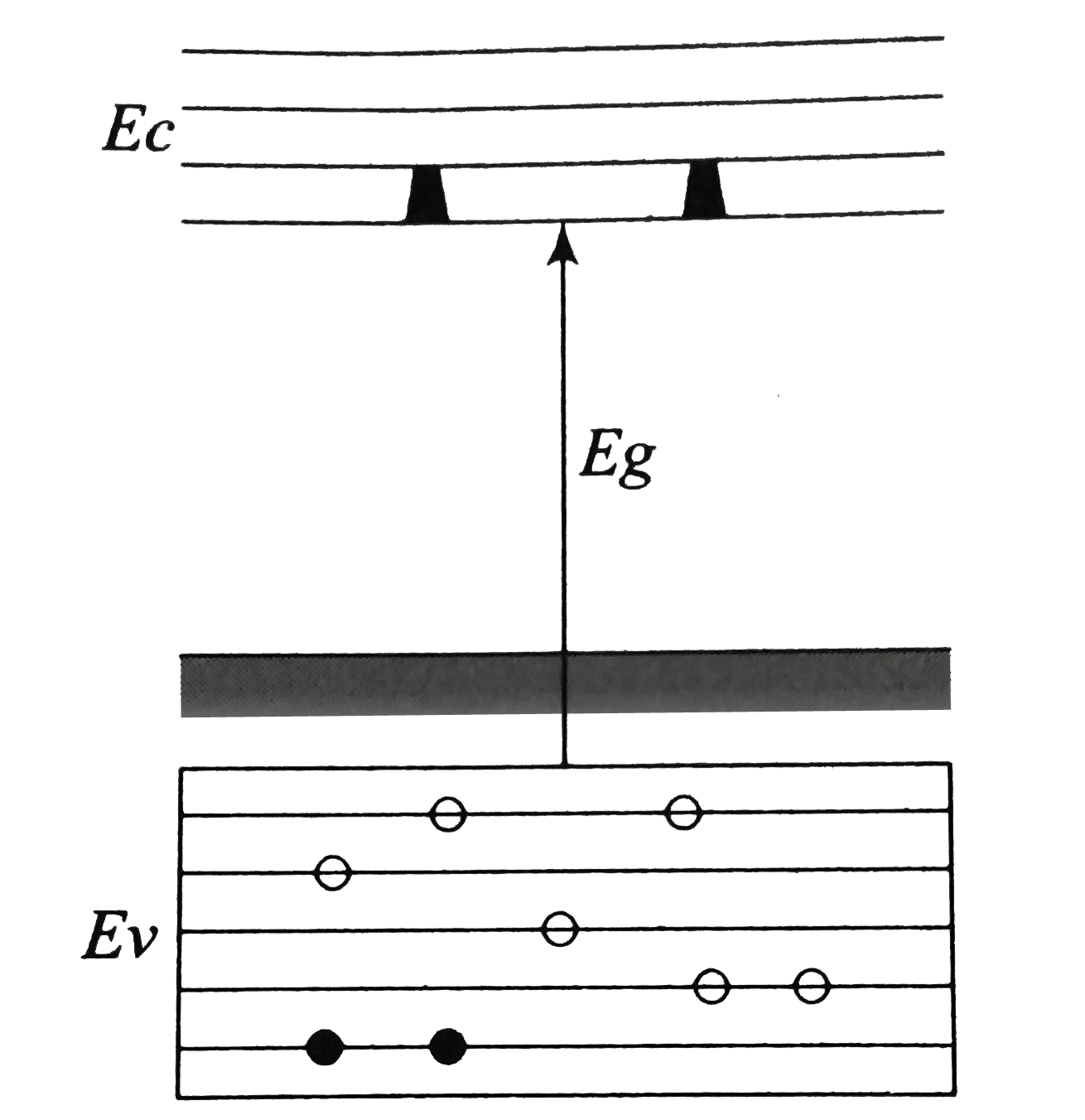The circuit diagram shown here corresponds to the logic gate:

1. \(\text{NOR}\)
2. \(\text{AND}\)
3. \(\text{OR}\)
4. \(\text{NAND}\)

1. \(\text{NOR}\)
2. \(\text{AND}\)
3. \(\text{OR}\)
4. \(\text{NAND}\)
An LED is constructed from a \(\mathrm{p\text{-}n}\) junction diode using \(\mathrm{GaAsP}.\) The energy gap is \(1.9~\text{eV}.\) The wavelength of the light emitted will be equal to:
1. \(10.4 \times 10^{-26}~ \text{m}\)
2. \(654~ \text{nm}\)
3. \(654~ \text{m}\)
4. \(654\times 10^{-11}~\text{m}\)
The correct Boolean operation represented by the circuit diagram given above is:
1. \(\mathrm{NOR}\)
2. \(\mathrm{AND}\)
3. \(\mathrm{OR}\)
4. \(\mathrm{NAND}\)
For a \(\mathrm{p}\text{-}\)type semiconductor, which of the following statements is true?
| 1. | Electrons are the majority carriers and pentavalent atoms are the dopants. |
| 2. | Electrons are the majority carriers and trivalent atoms are the dopants. |
| 3. | Holes are the majority carriers and trivalent atoms are the dopants. |
| 4. | Holes are the majority carriers and pentavalent atoms are the dopants. |
The following figure shows a logic gate circuit with two inputs A and B and the output C. The voltage waveforms of A, B, and C are as shown below:
The logic circuit gate is:
1. AND gate
2. NAND gate
3. NOR gate
4. OR gate
Which of the following is an example of forward biasing?
| 1. |  |
2. |  |
| 3. |  |
4. |  |
In the energy band diagram of a material shown below, the open circles and filled circles denote holes and electrons respectively. The material is a/an:

1. p-type semiconductor
2. insulator
3. metal
4. n-type semiconductor
In the following circuit, the output \(Y\) for all possible inputs \(A\) and \(B\) is expressed by the truth table:

| 1. | A | B | Y | 2. | A | B | Y |
| 0 | 0 | 0 | 0 | 0 | 1 | ||
| 0 | 1 | 0 | 0 | 1 | 1 | ||
| 1 | 0 | 0 | 1 | 0 | 1 | ||
| 1 | 1 | 1 | 1 | 1 | 0 | ||
| 3. | 0 | 0 | 1 | 4. | 0 | 0 | 0 |
| 0 | 1 | 0 | 0 | 1 | 1 | ||
| 1 | 0 | 0 | 1 | 0 | 1 | ||
| 1 | 1 | 1 | 1 | 1 | 1 |
The circuit is equivalent to:

1. AND gate
2. NAND gate
3. NOR gate
4. OR gate
A p-n photodiode is made of a material with a bandgap of 2.0 eV. The minimum frequency of the radiation that can be absorbed by the material is nearly:
1.
2.
3.
4.






